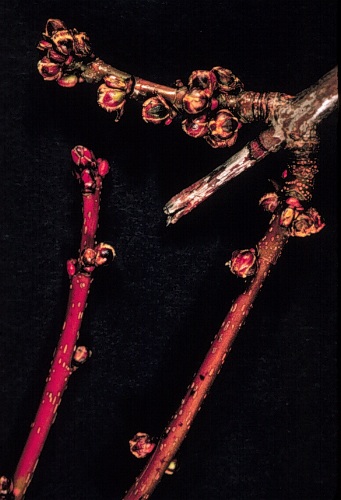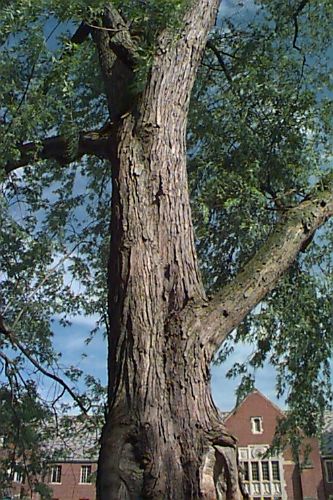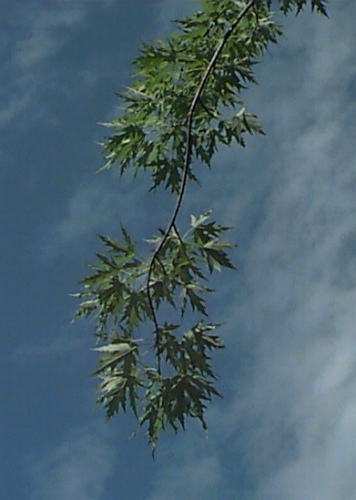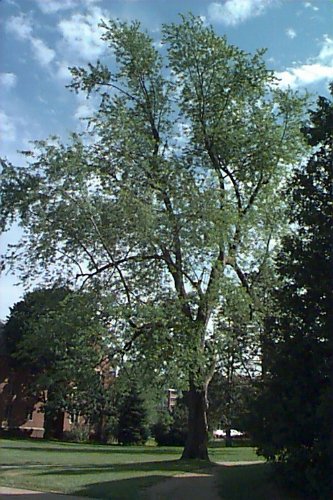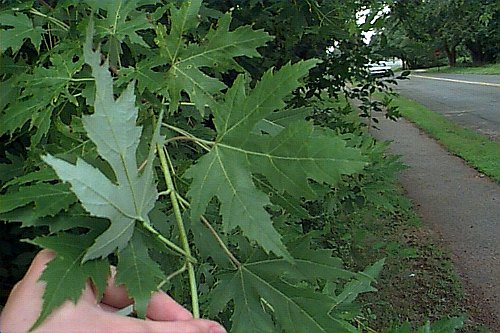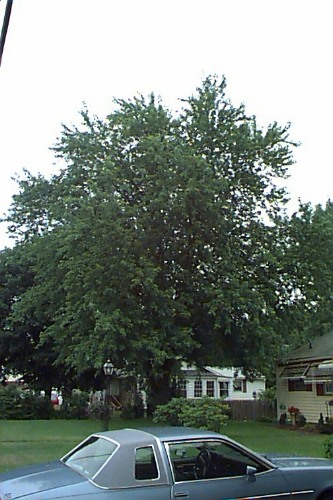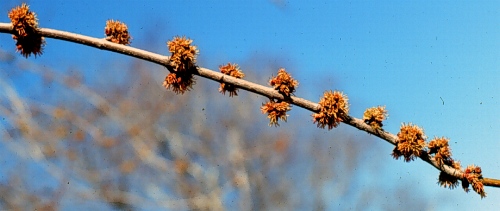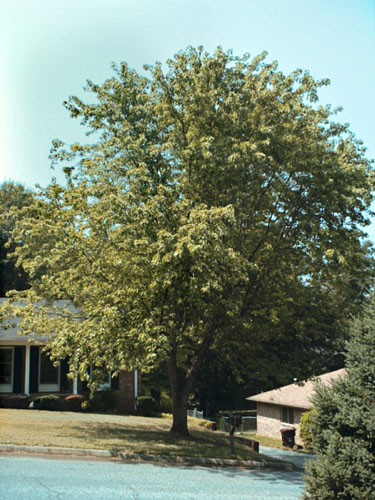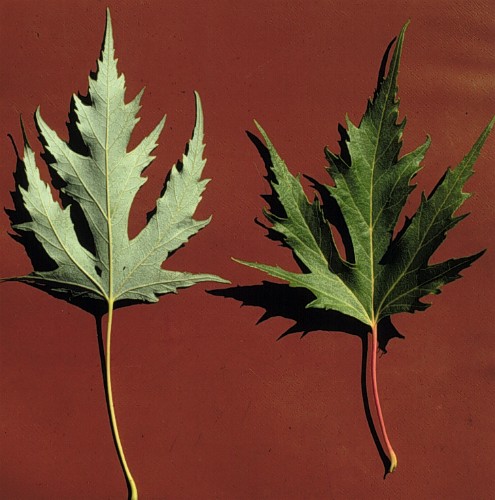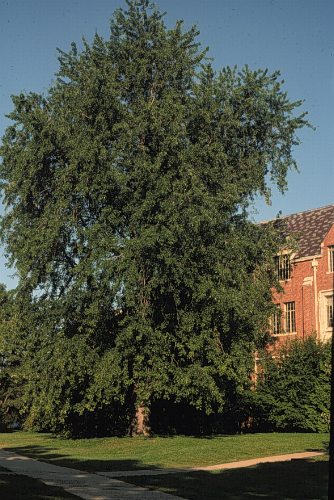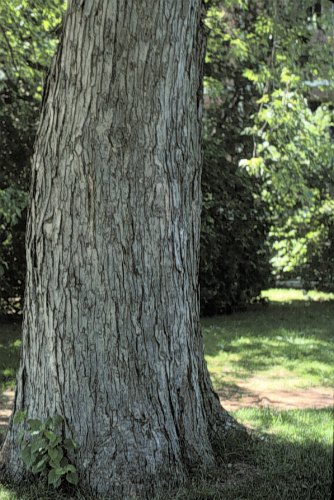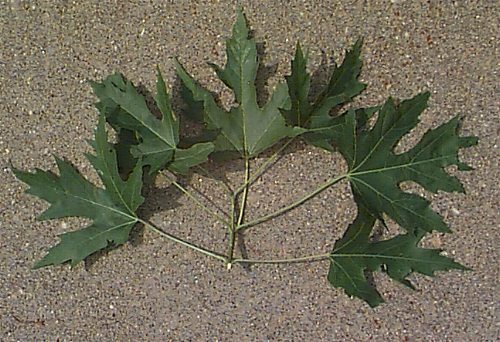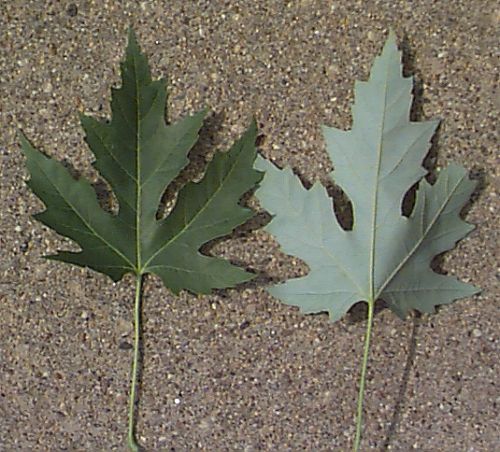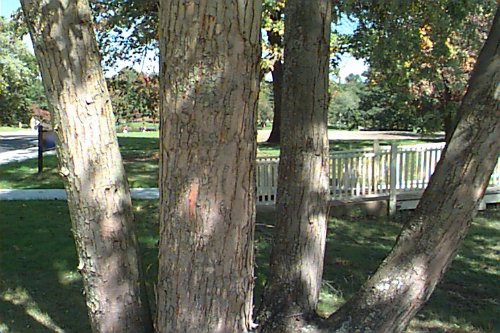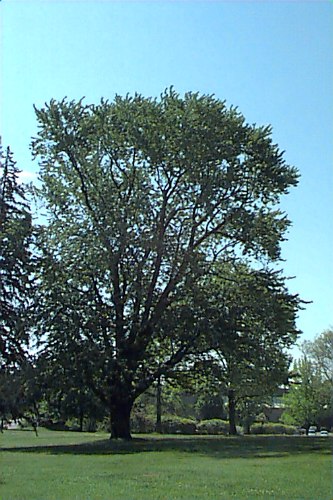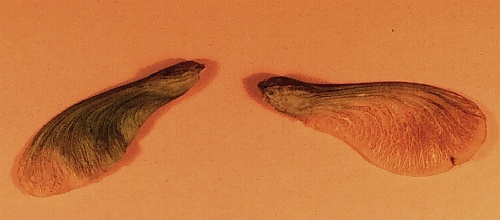Acer saccharinum
Silver Maple
Aceraceae
ExpandHabitat
- eastern United States and central plains, but not in the southeastern states. Also adjacent parts of Canada
- zone 3
Habit and Form
- large tree to around 70', but can reach well beyond 100'
- upright spreading branches form an oval or rounded crown that seems to have sprays of foliage jutting out
- branches arch over then turn up at the tips
- fast growing tree, vigorous
- medium texture
Summer Foliage
- opposite leaves, 5-lobed, fairly deeply incised
- bright green color above, silvery below
- 3" to 5" long leaves, long petioles
Autumn Foliage
- typically leaves drop a greenish yellow or green
- some specimens develop reddish tints
Flowers
- monoecious with male and female flowers on separate branches of a tree; some flowers may be perfect as well
- dull reddish orange in early spring
- small, somewhat showy, but not as noticeable as Acer rubrum or Acer platanoides flowers
Fruit
- samaras, 1.3" to 2.3" long, maturing in June
- one of the larger fruited maples
Bark
- trunk and branches are silvery-gray
- bark on trunk splits and flakes revealing orangish inner bark
- bark can be attractive and ornamental
Culture
- easily grown, transplanted and established so data is limited
- tolerant of a wide range of soils (not high pH)
- tolerant of drought as well as seasonal flooding
- tolerant of urban conditions
Landscape Uses
- shade tree
- temporary tree where fast growth is needed
- for difficult sites
- parks
- areas that receive seasonal flooding
Liabilities
- rapid growth creates weak wood which breaks easily in storms or under ice load
- shallow rooted and causes sidewalk/driveway buckling
- roots can clog drain pipes
- produces weed seedlings
- verticillium wilt, anthracnose, leaf spot, tar spot, several insects
- manganese chlorosis on high pH soils
- great genetic variation exists; not all are equally cold hardy
ID Features
- stems when broken produce a strong odor
- flower buds in clusters; look like Christmas ornaments
- buds similar to Acer rubrum, but slightly larger
- deeply cut foliage
- silvery bark with orangish furrows
- "droop and swoop" branch tips
Propagation
- by seed
- by cuttings for selections
Cultivars/Varieties
'Beebe' - Has somewhat pendulous branches and more deeply cut leaves than species.'Laciniatum' - A general cultivar for forms selected for their deeply-cut, dissected foliage.
'Silver Cloud' - A form out of Canada with extreme hardiness. The crown is oval and dense.
'Silver Queen' - A common cultivar with upright habit that is rounded when mature (to 50' tall and wide). Leaf color is good -- bright green above, silvery beneath and yellowish in autumn. Another possible benefit is reduced production of bothersome seedlings.
'Skinner' (also seen as 'Skinneri') - Interesting for its cut-leaf
character. The branch structure appears to be more horizontal than other cultivars.
